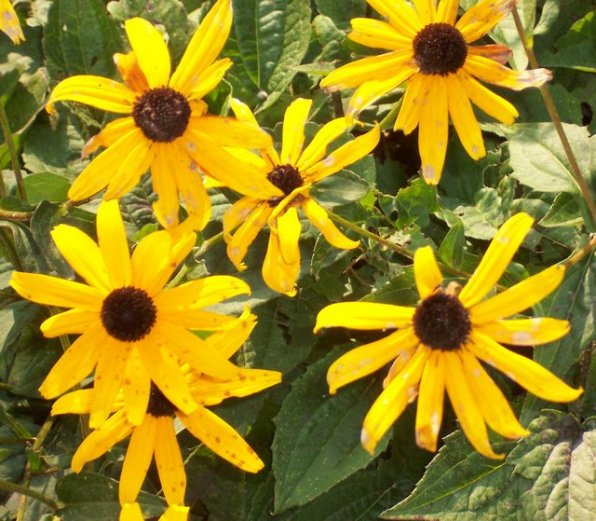The black-eyed susans blooming in my Concord front yard aroused my curiosity to research how this flower got its name. I learned that in 1720 an English writer, John Gay, published a ballad about a young maiden named Black-eyed Susan who goes on board a ship in the harbor to find her lover, Sweet William. After she finds him in a glorious reunion she is told by the ship's captain she must leave the ship. The ballad dramatizes the bittersweet parting of Black-eyed Susan and Sweet William and became a popular legend of love in English literature.
When the English colonists came to our shores and saw the beautiful golden flowers with dark conical centers they called the flowers black-eyed susans. The name sweet william has also been given to another flower. In fact, when Prince William and Catherine Middleton were married, the bridal bouquet included sweet william flowers.
Black-eyed susans are native to the western plains of the United States. When large tracts of forests were cut in the eastern part of our country to create fields and pastures, black-eyed susans moved eastward. They are now found in most states, and they are the state flower of Maryland. One of the longest lasting of our wildflowers, they will continue to blossom until the first frosts.
Because they can thrive in almost any type of soil, they have been called “poorland daisies.” Vast swathes of these flowers have made wastelands less wasteful. They love bright sunlight, and all summer and late into the autumn they are colorful entertainers of bees and butterflies by the side of roads and in vacant fields. They are pioneer plants, advancing ahead of other plants in sinking their roots into newly disturbed soil.
The center “eye” of each black-eyed susan flower is a composite of hundreds of tiny seed-bearing florets, making it easy for them spread rapidly across a sunny landscape.
A single plant can produce an extravagant carpet of stunning beauty in an enormous field.
In his book, “The Secrets of Wildflowers,” Jack Sanders states that the Chippewa Native Americans called these flowers “gizuswebigwais,” which means scattering, a reference to the flowers' tendency to multiply quickly. Black-eyed susans are in the family of composite flowers which is the largest family of flowering plants with over 10,000 different species world-wide.
The black-eyed susan flower has a sentimental and romantic name based on an English ballad celebrating the love of Black-eyed Susan and Sweet William. One gardener said, “I plant black-eyed susans and sweet williams in my yard beside each other so they will always be together.”
Black-eyed susans are at the center of many late season bouquets and they have a vase life of six to 10 days. One variety is known as “Indian summer.” When other wildflowers have folded up their petals and gone home, black-eyed susans will continue to perform in brilliant autumn displays as they are in my front yard.









